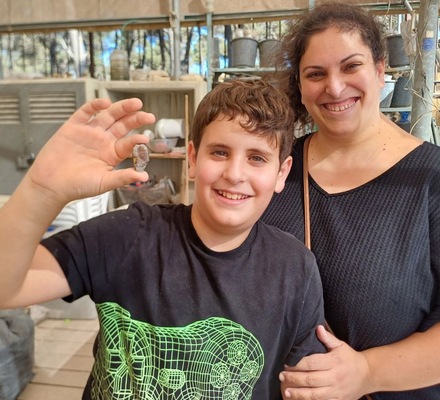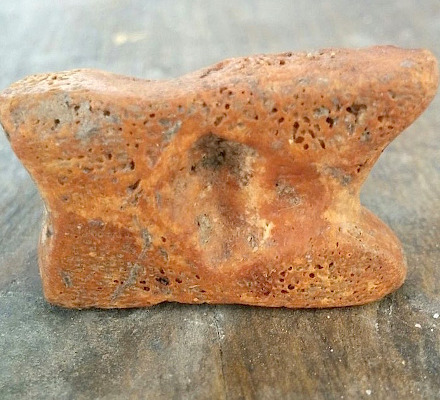Tag Archive for: Hellenistic

Find and Finder of the Month: Adam Cohen found a Hellenistic Lead Sling Bullet
Everyone knows that David fell Goliath with a pinpointed pebble stone from a sling. But did you know that sling bullets were still commonly in use a thousand years later? During the summer season, Adam Cohen from Jerusalem uncovered what may…

Find of the Month: The Doric Survivor – TMSP Staff
Doric survivor gives glimpse into Second Temple monumental architecture.

Find of the Month: It’s All Fun and Games! – Bar Yosef Family
Family finds bone astragolos from the game knucklebones at the Sifting Project! Find of the Month!

Evidence of Greeks on the Temple Mount
Amphora handle from the Temple Mount dates to the reign of Antiochus Epiphanes IV, the villain of the Channukkah story.
Tag Archive for: Hellenistic

Second Temple Period (Persian, Hellenistic and Early Roman Periods; 538 BCE – 70 CE)
Around 30% of the pottery dates to the Second Temple Period (ca. 516 BCE- 70 CE), of which two thirds belong to the later phases of the period (40 BCE- 70 CE). The ceramic finds can be broadly divided into two distinct groups: the first and earlier group dates to the late Hellenistic Period, the mid-first century BCE, and the second and later group belongs to the Early Roman Period – The mid-first century BCE to first century CE.
As with our First Temple Period assemblage, the pottery from the Second Temple Period includes a relatively large number of storage jars and jugs (though not juglets), as compared to contemporary assemblages from other sites in Jerusalem. Similarly, bowls and oil lamps are relatively infrequent.
The Hellenistic Period pottery is largely comprised of locally produced vessels. These typically include storage jars and several different bowl and cooking pot forms. Other vessels include Judean wheel-made folded oil lamps and unguentaria (narrow elongated vessels used for storing valuable liquids).
Locally produced vessels also dominate the Early Roman assemblage. These include a great number of open vessels exhibiting painted decorations. The bowls are well-fired, thin-walled and shallow. Cooking vessels are made of dark reddish-brown ware and include mostly cooking pots, casseroles and cooking jugs. The storage jars of the period changed from the thick-rimmed jars characteristic of the previous Hellenistic Period to collared-rims jars in which the collar moved lower down the neck as the time progressed, eventually to become a ridge at the base of the neck (see photograph). A small number of imported vessels were discovered as well. These include mostly bowl fragments of eastern Terra Sigillata ware.


